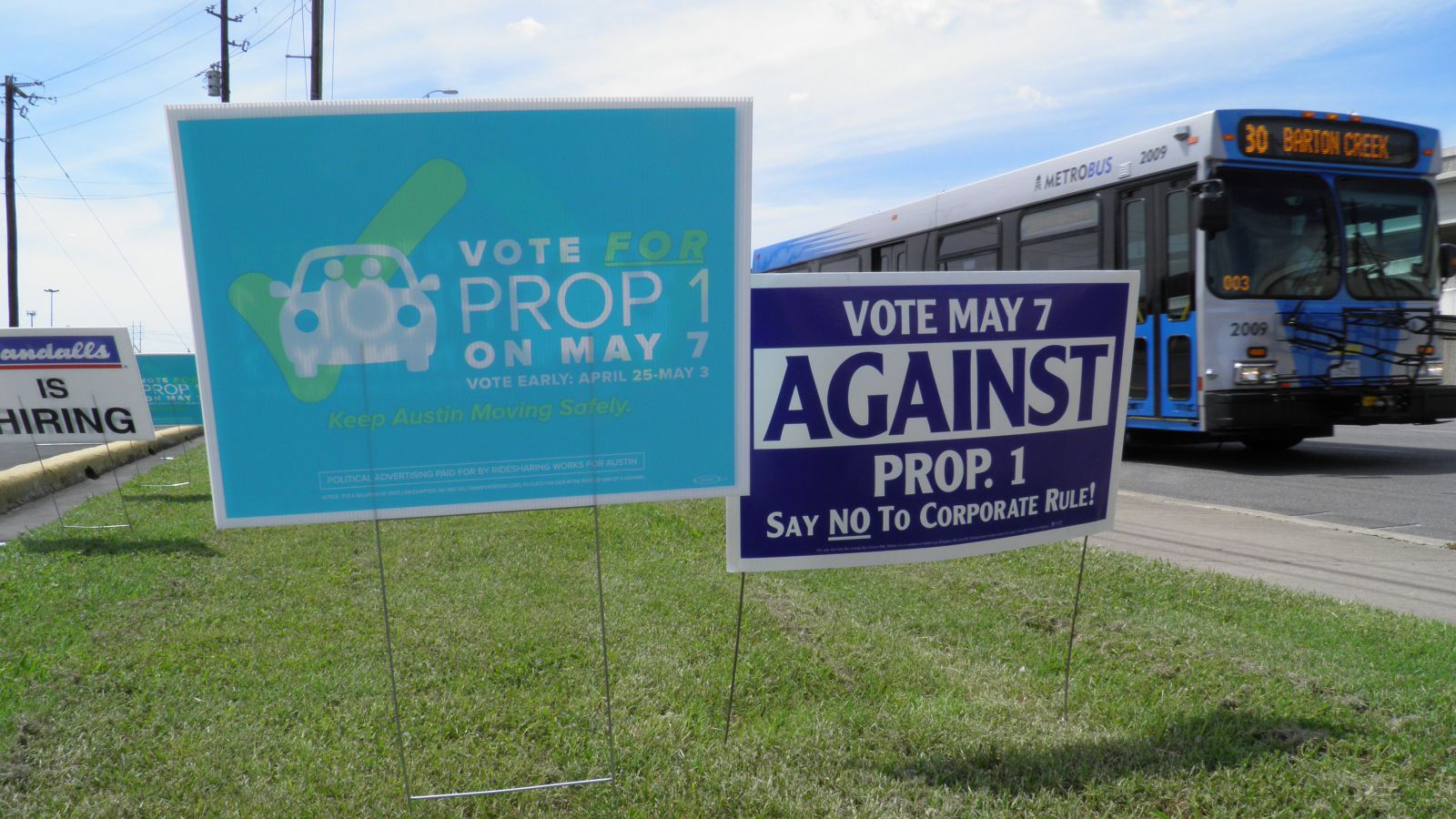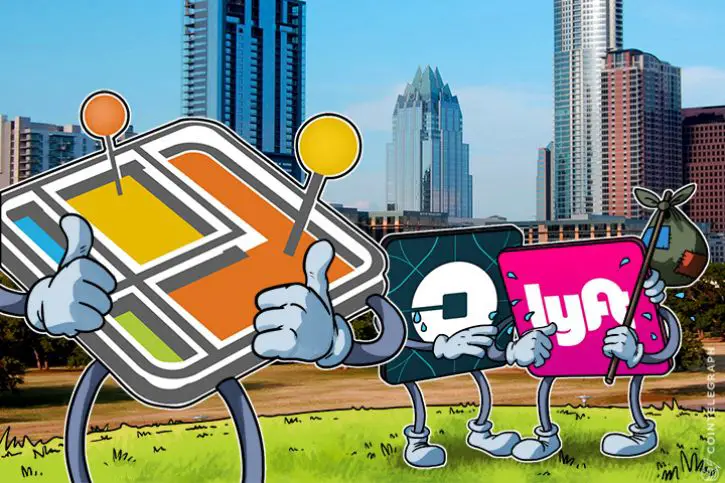Reevaluating Uber, Lyft, and the Concept of Ridesharing
It’s my—kind of unsafe—safety net.
By Jenna Ramsey, Seattle University
My already iffy relationship with the ride sharing company Uber became even more strained last week, when an election in my hometown of Austin, Texas showed the company caring more about its freedom from regulation than the safety of its customers.
Uber and Lyft both ceased operations in Austin on Monday, May 9th after the city’s voters turned down Proposition 1, a measure that would have the companies follow government regulations already required of cabbies, including fingerprint background checks of drivers.
Leading up to this vote was an obnoxious, unrelenting campaign by Uber and Lyft that included texts, flyers in the mail and signs all over the city threatening voters to “Say No To Corporate Rule!” or else. The marketing cost just under $9 million, and even I felt the irritating effects of the campaign 2,000 miles away, with over 15 texts to my phone in a single week telling me to vote against Prop 1. I live in Seattle now and haven’t taken an Uber ride in Austin since July of last year.
Given how annoyed I became just from my peripheral view of the situation, it didn’t surprise me when Austin voters sided with the city and watched Uber and Lyft follow through with their threats to leave the next day. I sense that the people who initially didn’t have much of an opinion one way or another were persuaded to vote against the companies solely out of spite for the childish way they’d handled the situation. That’s the reaction I would have had, anyway.
Ironically (considering the voters’ majority decision), many people are now upset with the city of Austin for letting Uber and Lyft get away. But that’s hardly the issue; Austin never told the companies to leave. To me, the results of this election say more about how far the ride sharing companies will go with their “my way or the highway” mentality, and how unwilling they are to inconvenience themselves—even if it means a better experience for the people who use their services.
It would be ideal, in my mind, for Uber, Lyft and similar companies to require that their drivers undergo more thorough background checks. Questions of the companies’ safety have been raised since their beginning, and Austin in particular has a history of sexual assault cases concerning Uber and Lyft drivers.
But like many other young, female college students, I’ve allowed Uber to become the unsafe safety net I use despite all of its red flags—mainly because I feel like there’s no better option.
I’ve started using Uber more often since I moved to Seattle. Austin is a more of a car city because of how spread out—and hot, hot, hot—it is, but that’s why more people (including me, when I lived there) own cars already. In Seattle, parking is so expensive and difficult to find in the first place that owning a car seems like much more of a hassle than it’s worth. And since everything is generally closer together in Seattle, Uber rides tend to be less expensive.
I don’t use Uber during the day—or even very often at all, for that matter. The bus is a significantly cheaper option and downtown Seattle is much more compact and walk-able than downtown Austin is. The times Uber comes in handy are when it’s dark outside and I’m a little farther from home than I’d like to be on foot. And for about three-quarters of the year, it gets dark in the Pacific Northwest annoyingly early—often before 5 p.m.
That was the case recently, when a friend and I used Uber for a trip back from a concert. The sky was black, we were a thirty-minute walk from home and a cab would have taken a while to get to us. And the crowd filing out of the venue—comprised almost entirely of loud, drunken men—was reason enough to want a quick getaway.
That night I was grateful for Uber, the only option that promised I’d be back in bed watching “Bob’s Burgers” less than ten minutes after asking for a ride.
But after three years of sporadic Uber use in both Austin and Seattle, I still don’t feel entirely comfortable with the app. Tapping the screen to request a driver always makes my mouth a little dry when I think about the risks of unquestioningly getting into the car of a total stranger. The fact that I have never seen a female driver’s photo pop up doesn’t help my anxiety.
For a moment earlier this year, my worries seemed to be met with a solution when a former Uber driver introduced the concept of Chariot for Women (now called SafeHer), a company similar to Uber and Lyft that would only give rides to women, and boys under the age of 13. The drivers would also be female-only. Unsurprisingly though, that idea faces a ton of legal issues, and if it ever launches it’ll be a while from now.
I’m disappointed that Uber and Lyft have stopped servicing Austin, but my disappointment is with the companies, not the city. Threatening voters with suspension of their services—and then actually following through with it—felt like a parent putting a kid in time-out.
Just a few years ago, before these services were available, there were even fewer options for those of us without cars to get around safely late at night. Requesting an Uber or a Lyft isn’t the most foolproof option, but it’s there. It would just be nice if these companies would put the effort in to make the option of ride sharing feel less risky.

















